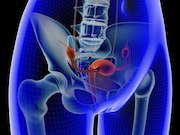Tag: Cancer: Misc.
Alcohol, Tobacco Consumption Tied to Cancer Mortality
Over 20 years, a 1-L reduction in alcohol intake was linked to 3.9 percent drop in overall cancer mortality
Guidelines Conflict for Long-Term Opioid Tx in Cancer Survivors
Inconsistencies exist between CDC and NCCN opioid guideline recommendations
Monthly Vitamin D Supplement May Not Cut Cancer Risk
High-dose monthly supplementation doesn't reduce risk of cancer among middle-aged and older adults
Complementary Medicine Use Ups Refusal of Usual Cancer Therapy
Mortality risk linked to complementary medicine mediated by treatment refusal
Overall Cancer Mortality Rates Decreasing for Men and Women
Incidence rates decreased among men from 2008 to 2014, remained stable among women
Higher Risk of In-Situ Breast CA, Ovarian Tumors With Fertility Tx
No increased risk of corpus uteri, invasive breast cancer for women undergoing assisted reproduction
June 2018 Briefing – Hematology & Oncology
Here are what the editors at HealthDay consider to be the most important developments in Hematology & Oncology for June 2018. This roundup includes...
Initial Outcomes No Worse for Surgical ICU Patients With CA
ICU and hospital mortality were lower for patients with cancer versus those without cancer
Higher Rates of Cancers Observed Among Flight Attendants
Especially breast cancer, melanoma, and non-melanoma skin cancer among female flight attendants
In Cancer Patients, PTSD May Increase Symptom Burden
Post-traumatic stress symptoms also linked to lower risk of readmission in hospitalized CA patients














